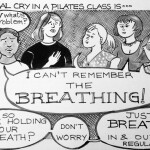Issue #311 – Wednesday, September 16, 2020
The Pilates Companion (My Pandemic Book Promo!)
by Lyn O’Neill
During a world pandemic seems an unlikely time for a book to find its readership, but this has unexpectedly happened for a book I wrote and illustrated that was published in 2018 called The Pilates Companion.

During lockdown in the UK, as well as the rest of the world, we have all been forced to dig deep and either work on our own without our normal face-to-face Pilates classes or find other means of doing them. Not all Pilates teachers in the UK were able to teach their students on conferencing platforms such as Zoom; some people have old laptops or computers while others, such as those living in my area in the countryside, simply don’t have enough internet bandwidth. One enterprising person wrote to me saying that she and her best friend both planned classes and did them together on WhatsApp every week using my book as reference. In addition, Pilates teachers wrote telling me they had planned classes using the book for ideas and inspiration. I have been astonished at the degree of renewed interest in this quirky little book that has been generated by an enforced period of quiet and intense contemplation.
However, I digress. What is The Pilates Companion?
In a nutshell, I wrote and drew a book, based on Contemporary Pilates (apologies to the classicists among you) in Comic Book format as a result of the frustration I felt at never being able to find anything that taught me Pilates in a manner that I could digest.
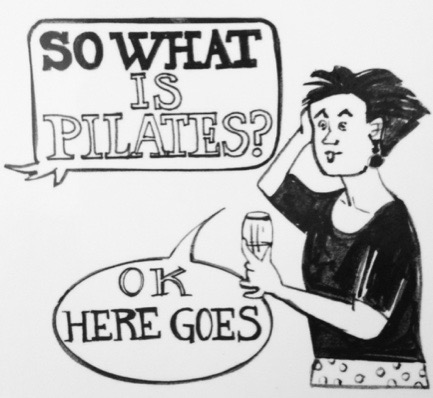
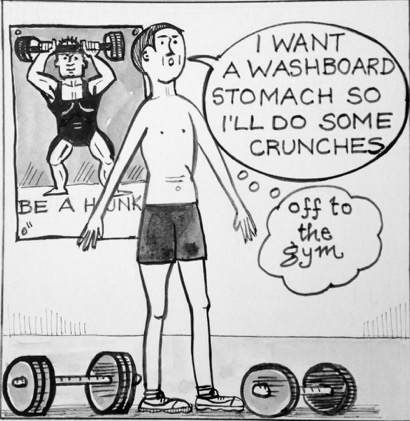
Like most Pilates teachers, I have a library of beautiful Pilates books. But when my students asked me to recommend one, I struggled to find many that would help them. They were either too technical, had too few exercises, the explanations were too complicated, there was no illustration of the flow of an exercise and the detail, not enough anatomy or too much anatomy. As well as this, none of the pictures depicted the people I saw on a daily basis doing Pilates; they all looked far too perfect and it felt intimidating.
Instead of finding one book to recommend, I spent hours drawing exercise sheets for my clients that were scrawled with arrows and notes. That was a very time consuming process and, as I was regularly teaching more than 100 people a week, this eventually became unsustainable.
So, let’s go back even further. My passion is communication. I have worked professionally as an illustrator and film animator using drawings to communicate complex ideas in the same way as other people might use words. In my opinion, the old saying that “a picture is worth a thousand words” is only true if that picture strikes a chord with the viewer in some way. The picture is pointless if you can’t relate to it, which is why a picture of a pale-skinned 30-year-old woman with a perfect body doing Pilates is not going to resonate with a middle aged overweight woman or even a 30-year-old man of colour.
My first task was to invent a picture language as well as neutral characters that many people could relate to. The ‘illustrated “notes” I made during my Pilates training were invaluable as I had already created a shorthand drawing style with arrows and words to remind me of some of the complex exercises we were learning.
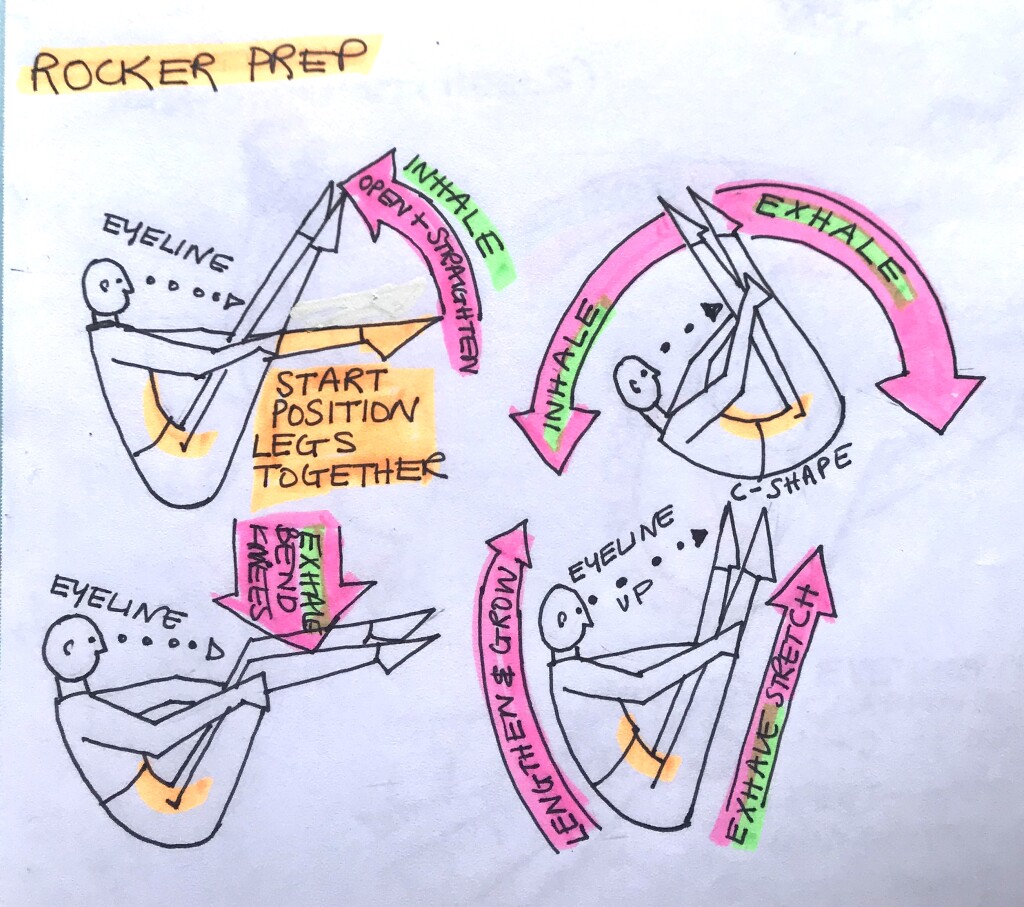
Notes I made while trying master the Open Leg Rocker
The ‘rules’ of designing a comic book are that words and pictures should work in harmony, the pictures saying as much as the words and the words never dominating the pictures and they appeal to the visual learners among us. Very much like a Pilates class!
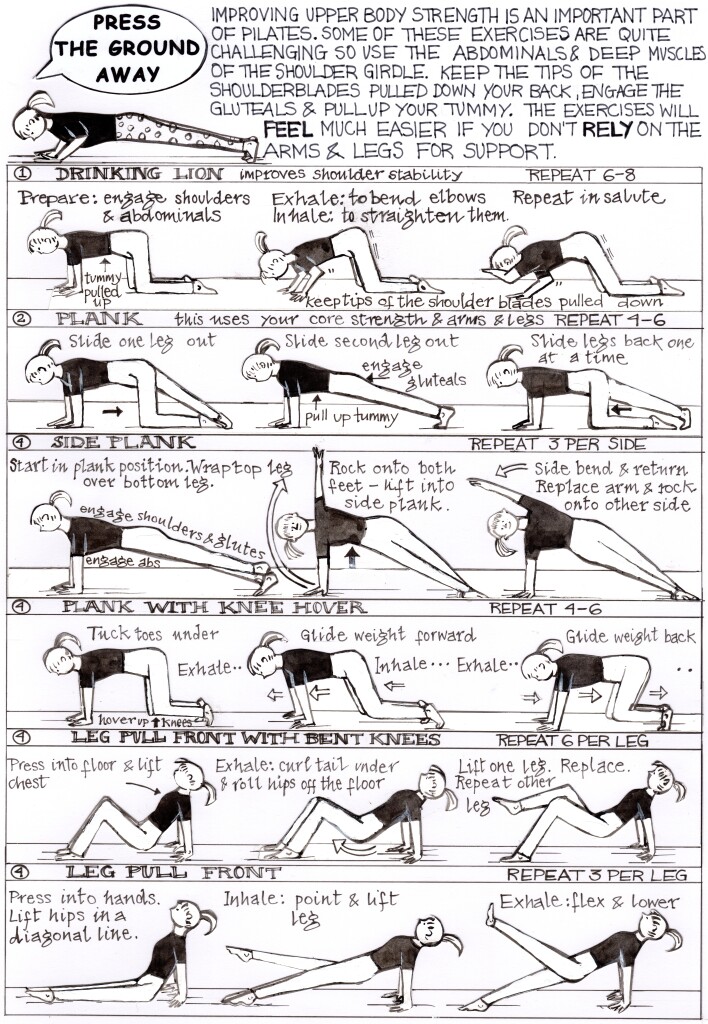
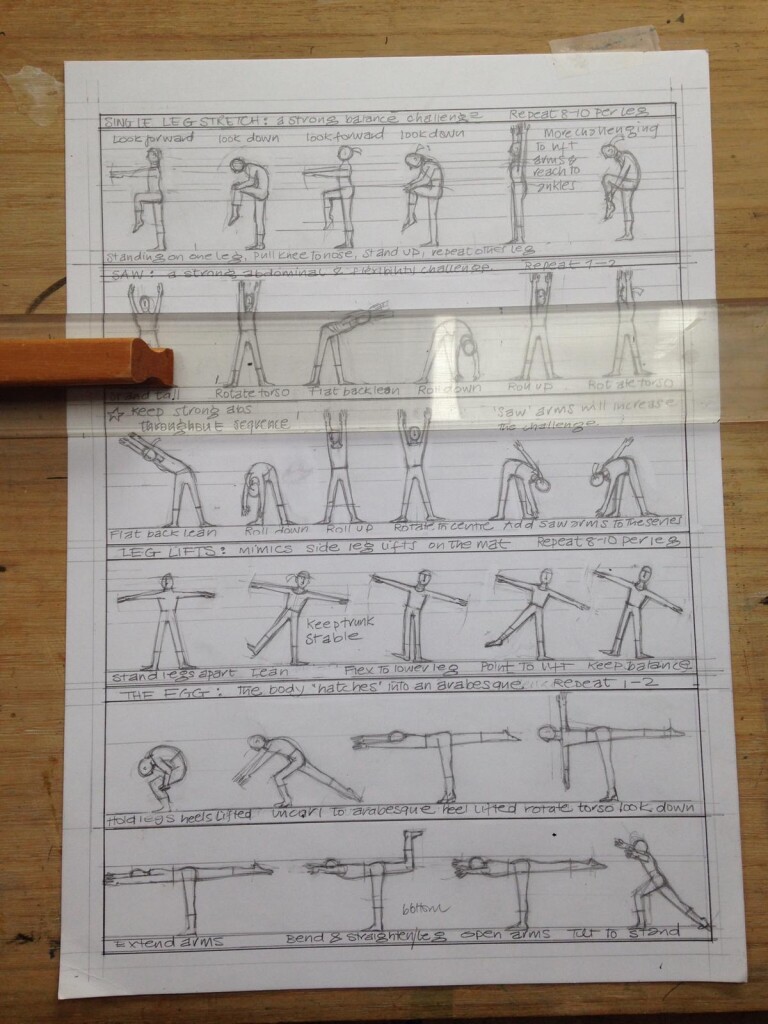
The exercises were drawn by hand in pencil and then inked with a fine brush.
As a generalised group, Pilates Teachers are visual/kinaesthetic learners (we need to see and feel) but as most of us talk too much in our attempt to teach verbally in an effort to convey as much information as possible, there is immediately a dissonance in our teaching. Worse than that, I quickly learned that many cues still heard on a daily basis in many Pilates classes such as “zip and hollow”, “navel to spine”, “smile though your hips”, “imagine headlights on your hips” and countless others are complete nonsense to the uninitiated.
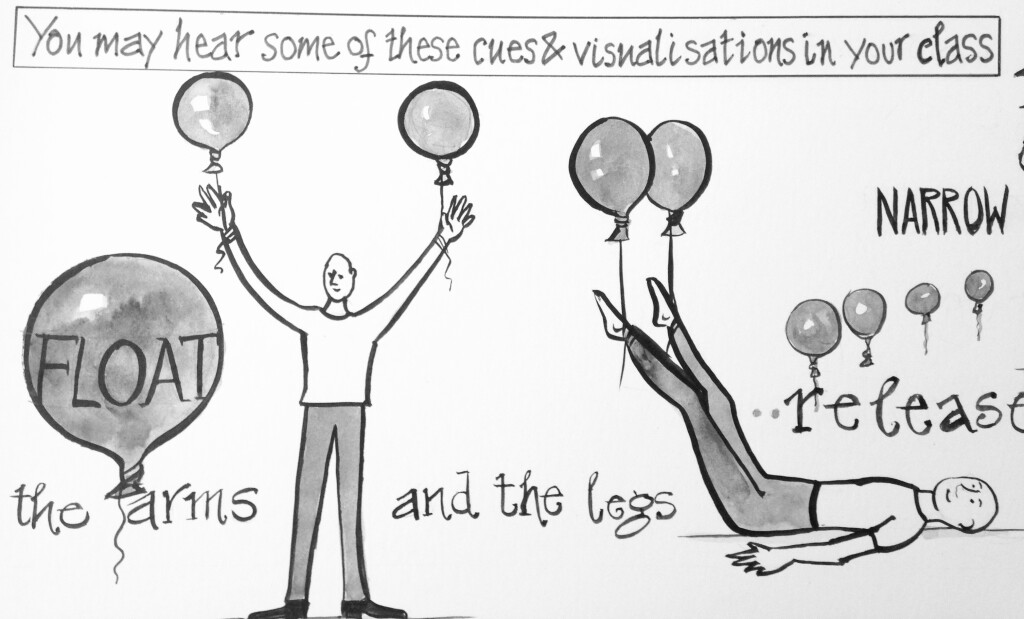
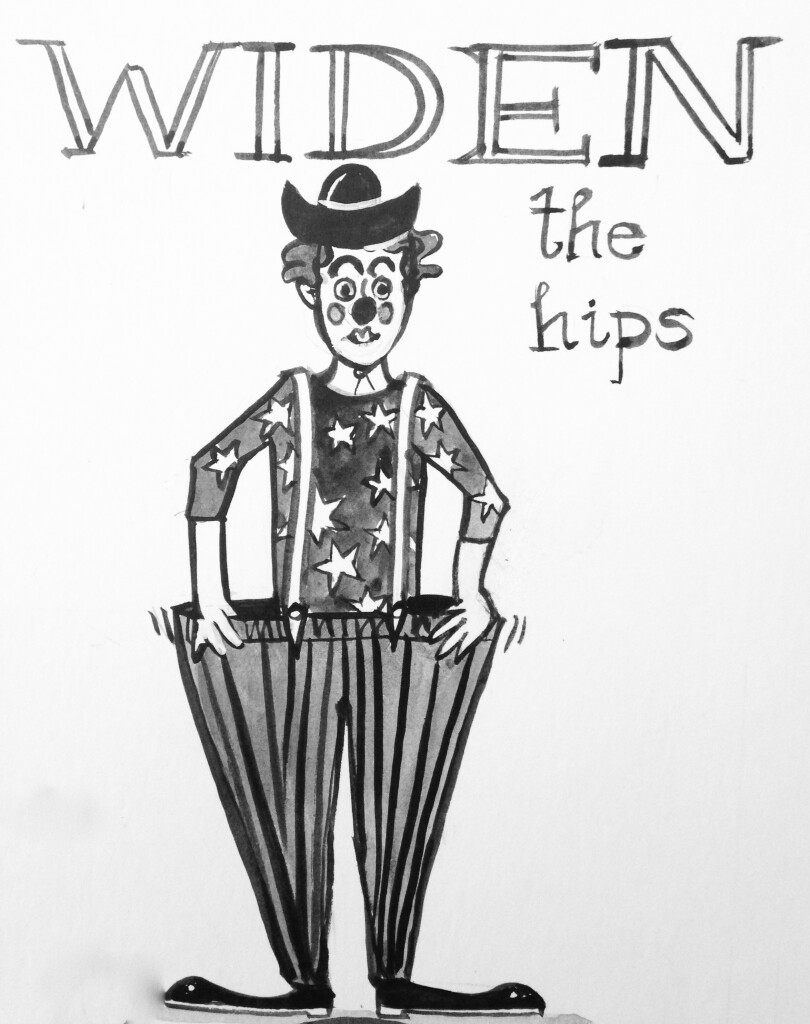
What do they actually mean?
My aim has always been to trim words to the bare necessity, replace irrelevant cues & thus remove the distractions in order to enable clients to focus on other things: breathing, centering, balance, flow and all the other principles.
Most people in a Pilates class will not be students of anatomy but it would help them to know “how things work” – so my other inspiration was a wonderful series of manuals produced from the 1950’s into the 1970’s by the publisher Haynes on how to service your own car! In the days when you could service your own car, every man had a Haynes manual and could be seen using it while tinkering in the engines. I wanted to produce a DIY manual to enable you to do your own Pilates exercises, not necessarily those that looked so extreme that you did them once, gave up and never did them again, but ones that you could conceivably do at home and that made you feel better.
A manual to answer the question “why is it called Pilates?”, to give you tips about breathing, where to find your pelvic floor and to explain what it actually is, why the shoulder girdle is so important, a glossary of the weird cues used by Pilates teachers and finally LOTS of exercises & how to do them including Joseph Pilates fabulous 34 original exercises.
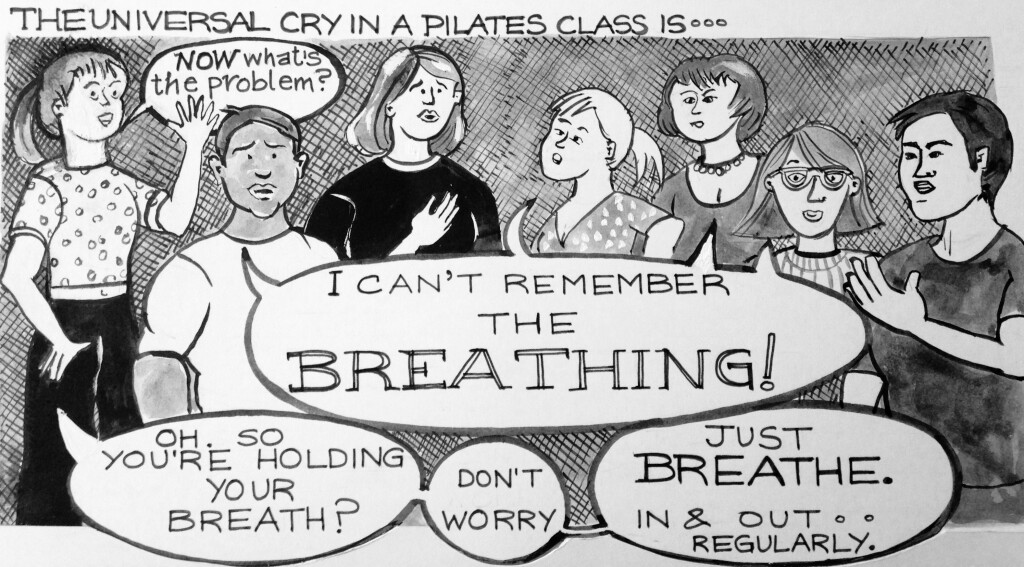
Drawing the book took me five years and was my respite between teaching classes. I felt bereft when I finally handed my “baby” over to the publisher. Judging from comments and feedback, it has found a happy readership and has certainly come to maturity during this very strange period of time for all of us.

